Ever thought about getting ready for cold snow weather? As winter comes, knowing how to get ready is key. Tips for cold weather can help you stay warm and safe.
It’s important to know your limits and get your home and car ready. This section will guide you on how to stay safe during the cold months. You and your family will be protected from the frost.
Key Takeaways
- Preparation is key for safety in cold snow weather.
- Knowing your environment helps you deal with winter.
- Right clothes and gear keep you warm.
- Being ready can stop health problems from cold.
- Having a good plan is essential for cold weather prep.
Understanding Cold Snow Weather
Cold snow weather brings special challenges. You need to pay attention and get ready. Knowing about cold weather, like temperature changes and snow, helps keep you safe.
These things affect how you travel, play outside, and even your health. Learning to get ready for cold weather helps you face these challenges with confidence.
Being in the cold for too long can cause frostbite and hypothermia. That’s why it’s important to know how to stay safe. Wearing the right clothes, staying dry, and watching your body temperature are key.
Also, checking local weather alerts and forecasts is important. It helps you know about storms or cold drops. This way, you can plan your day and stay safe.
Essential Winter Clothing for Staying Warm
When winter comes, picking the right clothes is key. Good winter clothes keep you warm and protect you from the cold. Knowing about fabrics and layering is important.
Choosing the Right Fabrics
Choosing the right fabric is very important. Wool, fleece, and thermal fabrics are great for keeping warm. Wool stays warm even when it’s wet.
Fleece is light but keeps you warm. Thermal fabrics trap air for extra warmth. It’s also good to wear clothes that draw sweat away from your skin.
Layering Techniques for Cold Weather
Layering is a smart way to stay warm in winter. You need three layers: a base, an insulating, and an outer shell. The base layer keeps your skin dry.
The insulating layer, like fleece or down, keeps you warm. The outer shell protects you from wind and rain. This way, you can adjust as the weather changes.
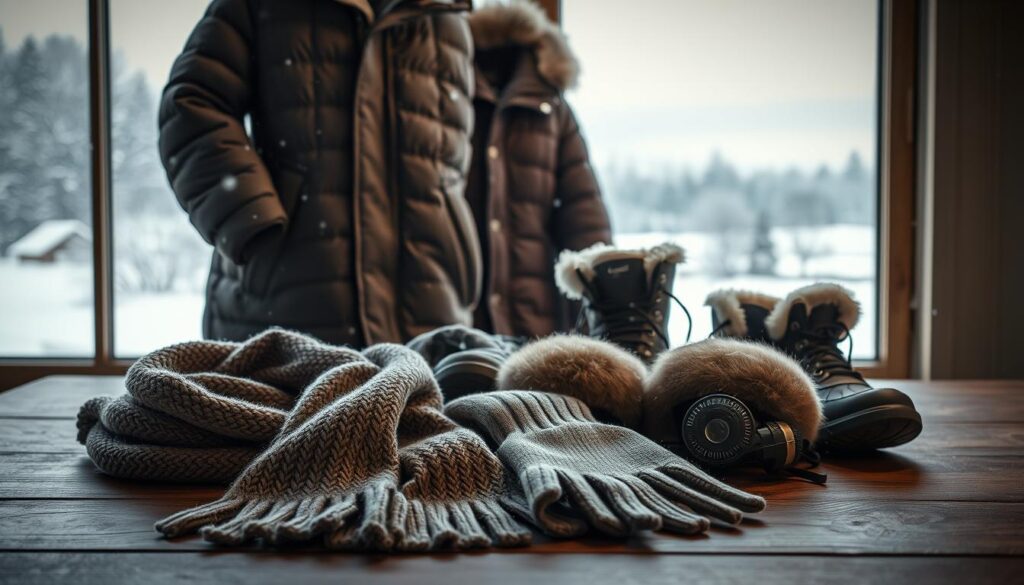
How to Act in Cold Snow Weather
Knowing how to act in cold snow weather is key to staying safe. Not being able to respond well can increase risks. Knowing the signs of hypothermia and having emergency plans is very important.
Recognizing Signs of Hypothermia
Be careful when it’s very cold. Look out for early signs of hypothermia. Common symptoms include shivering, confusion, fatigue, and slurred speech. If you see these signs, act fast to keep things from getting worse.
Emergency Response Strategies
Knowing how to handle snowstorms is important. Here are some tips:
- Find shelter from wind and snow to keep warm.
- Wear lots of layers and cover skin to avoid cold injuries.
- Call for help if you or someone else has hypothermia.
- Give first aid by moving them to a warm place and giving warm drinks if they can.
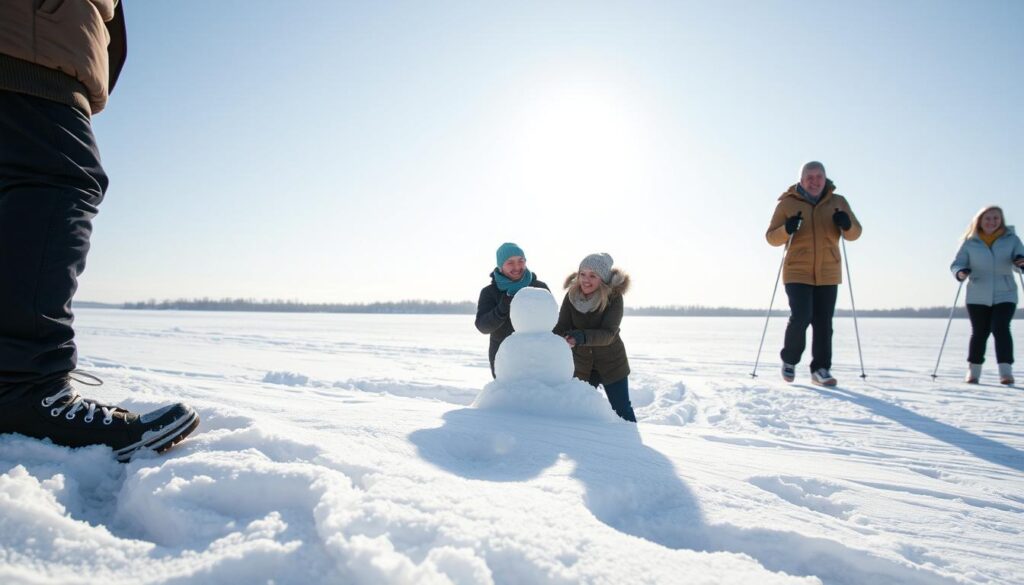
Home Preparation for Cold Weather
When cold weather comes, getting your home ready is key. This helps keep you warm and safe. Focus on insulation and having emergency supplies ready.
Insulating Your Home
Insulation is important to keep your home warm. Look for drafts around windows and doors. Use sealants and caulking to stop heat from escaping.
Adding weather stripping helps too. Heavy curtains or thermal blinds can also keep your home warm. This saves money on heating costs.
Stocking Emergency Supplies
Insulation is just the start. You also need emergency supplies for power outages or snowstorms. Keep these items ready:
- Blankets and warm clothes
- Non-perishable food
- Water and drinks
- Flashlights and batteries
- A first aid kit with your meds
By preparing your home, you make it safe and cozy for the cold months.
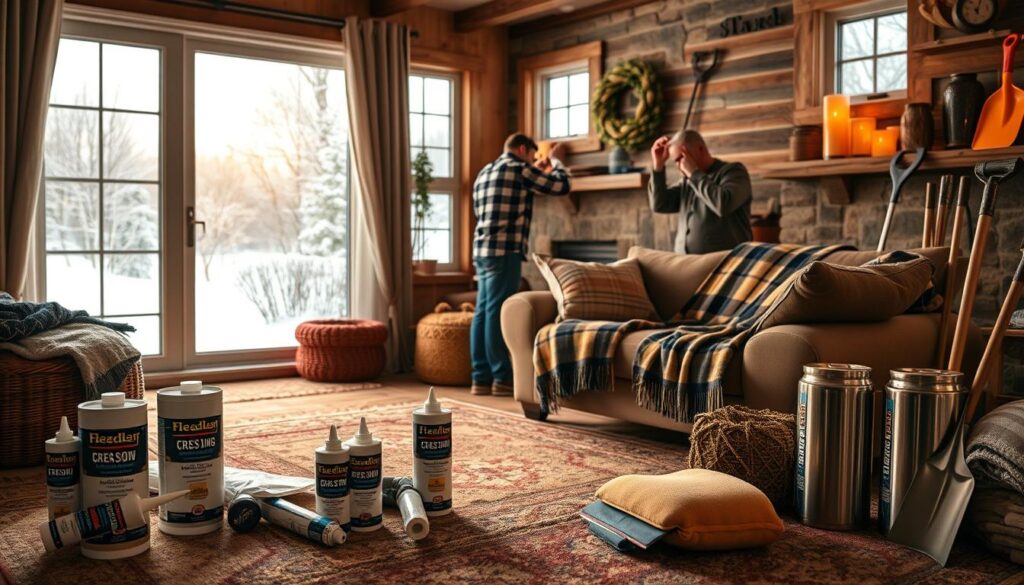
Preparing Your Vehicle for Winter Conditions
Winter brings tough driving conditions. Your car needs special care to stay safe. Make sure to check your winter tires and have an emergency kit ready.
Winter Tire Check and Maintenance
Check your tires before the snow falls. This is key for safe driving. Here’s what to look for:
- Tread Depth: Your tires should have at least 6/32 of an inch tread for snow.
- Pressure Levels: Cold air lowers tire pressure. Check and adjust it often.
- Visual Inspection: Look for damage or wear. Replace tires if you find any.
Emergency Car Kit Essentials
Having a good emergency kit is vital. It should have:
- Jumper cables for battery problems
- A blanket to stay warm
- Non-perishable food for energy
- Water bottles to stay hydrated
- First aid for small injuries
- A flashlight with extra batteries for light
- Tire traction aids for better grip
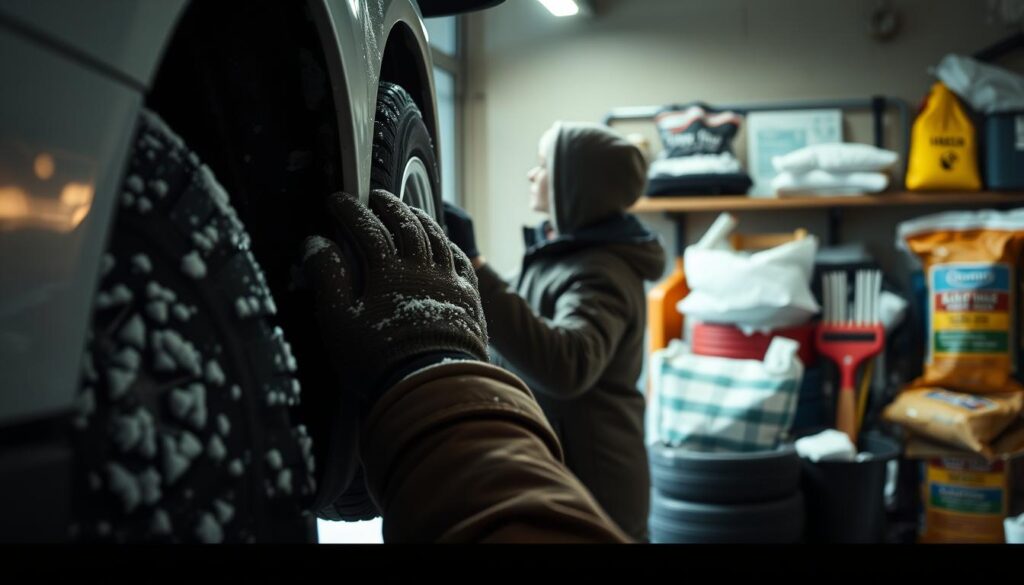
Staying Safe During a Snowstorm
Being ready is key to staying safe in a snowstorm. Knowing what to do first can help you survive. A good guide can be your best friend. Always think about staying warm, eating, and talking to others.
Also, knowing the weather helps you make smart choices when storms hit.
Snowstorm Survival Priorities
Keeping warm is your top goal in a snowstorm. Find a place away from wind and stay dry. Then, make sure you have food and water.
Having non-perishable food ready before a storm is smart. If you’re stuck, save your food and water. Use a radio to get weather updates and stay informed about help.
What to Do If You Get Stranded
If you get stuck in a snowstorm, what you do matters a lot. First, use a bright cloth, mirror, or flashlight to signal for help. It’s important to stay in one place; moving too much can make you tired.
Save your energy and watch your surroundings. Your car can be a safe place. Start the engine to stay warm, but check the exhaust for snow to avoid poisoning.
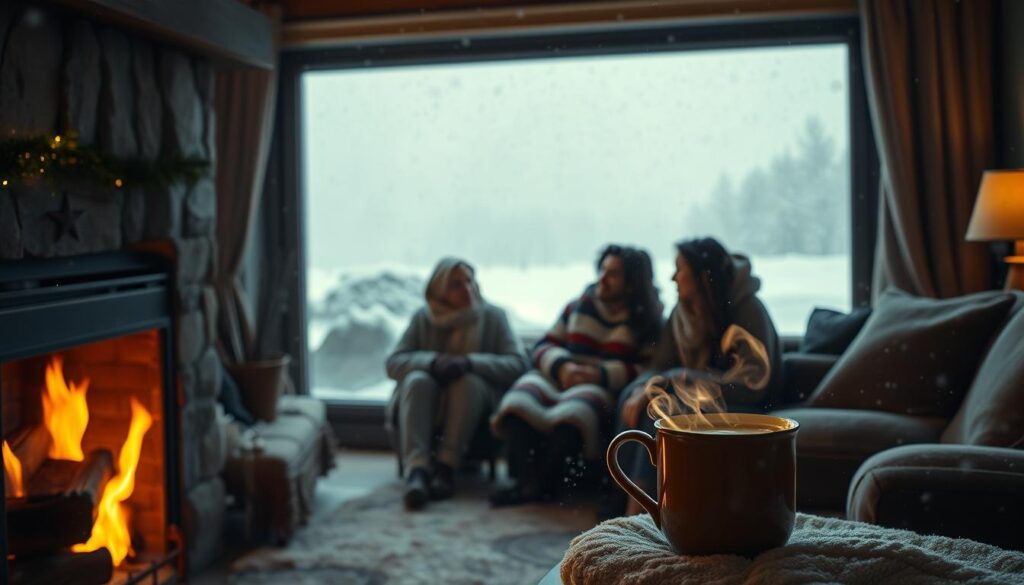
| Action | Description |
|---|---|
| Signal for Help | Use visual signals like colored cloth or lights to attract attention. |
| Stay Put | Do not attempt to walk in a snowstorm; it can lead to disorientation. |
| Conserve Energy | Minimize movement to prevent exhaustion; use your warmth wisely. |
| Maintain Communication | Use a radio for updates and to learn about rescue operations. |
Outdoor Safety Tips for Cold Weather Activities
Playing outside in the cold can be fun. But, safety comes first. Follow these tips to make sure your snow play is safe and fun. Think about the weather and who’s playing before you start.
Choosing Safe Activities in Snow
Choosing the right winter activities is key. Here are some good ones:
- Snowshoeing
- Sledding
- Cross-country skiing
- Building snowmen
Check the snow before you go. Make sure everyone knows the safety rules. Pick places that are easy to see and have someone watching.
Keeping Children Safe in Cold Weather
Keeping kids safe in the cold is very important. Watch their body temperature and look for signs of cold. Here are some tips:
- Dress in layers to stay warm
- Use insulated gloves and hats to keep warm
- Take breaks to warm up inside
Teach kids about cold weather dangers. With the right steps, playing outside can be safe and fun for all.
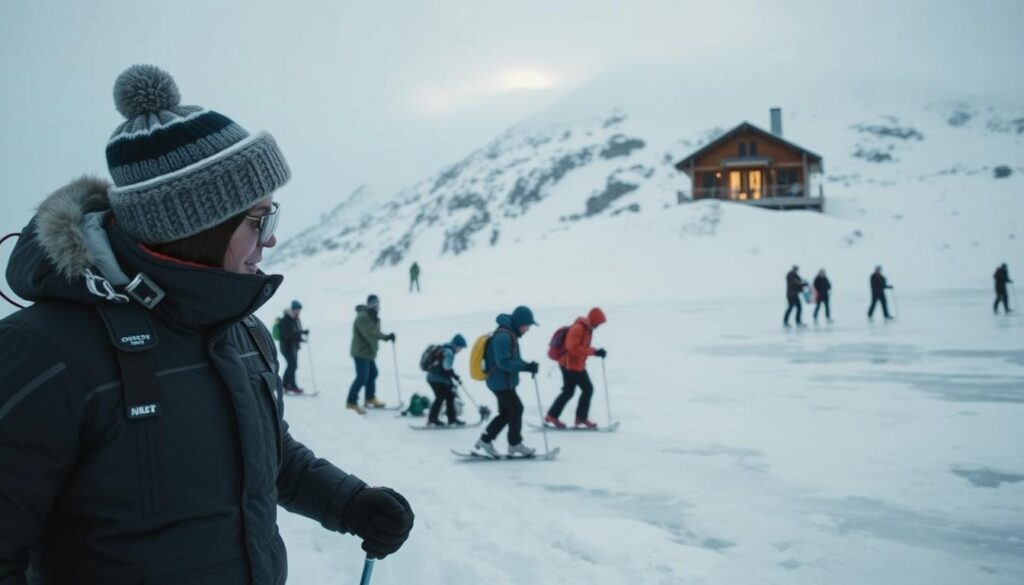
Conclusion
As winter comes, knowing how to get ready for cold is key. We’ve talked about important steps, like picking the right clothes and getting your car and home ready. Knowing these tips helps you feel safe and warm.
Getting ready is not just for you. It’s also for your community. Tell others about these tips and share what you know. Together, we can all stay safe and warm.
Make sure you’re ready for winter. Follow these tips to stay warm and safe. Stay alert, stay warm, and enjoy winter safely.

